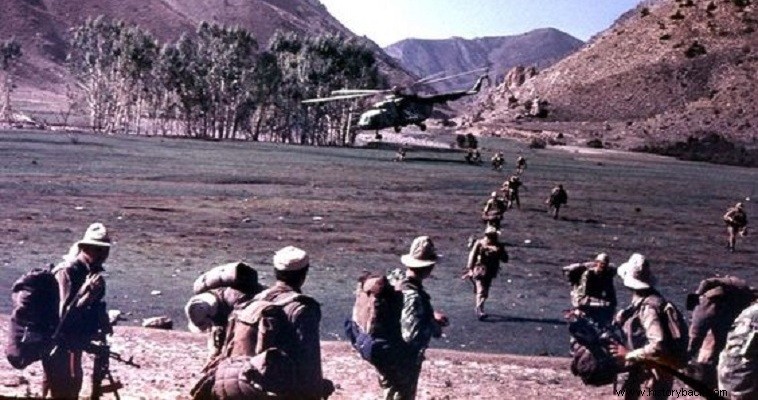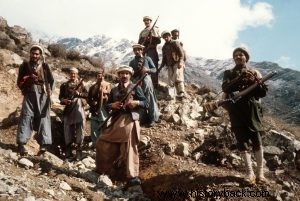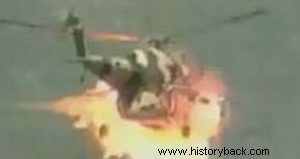
In 1979 the Soviets invaded Afghanistan to prop up the shaky communist puppet regime they installed after the 1978 coup and assassination of the country's prime minister.
The Soviet invasion provoked an immediate reaction from the Afghans. This is how the Mujahideen (defenders of the "faith") rebel movement was born. Soviet strategy in Afghanistan aimed to occupy cities, strategic roads and infrastructure primarily and not land.
In order to deprive the rebels of the support of the local population the Soviets carried out large, violent population movements, burning villages, destroying crops, even throwing chemicals.
Panjir and resistance
An important objective of the Soviets was the Panjir valley northwest of the capital Kabul, being the end of the Indo-Caucasus mountain range. In this valley the Soviets carried out nine offensive operations to crush the rebels in the period 1980-85.
The valley is a strategic point as from there you connect Kabul with northern Afghanistan, via the Salang pass (at a height of 3,878m) but also with Uzbekistan which was then part of the Soviet territory. Besides, through the valley the Mujahideen could attack Kabul , as they often did and harassed the Soviet forces with constant ambushes.
In June 1979 Ahmed Shah Masood. Masood was studying civil engineering in Kabul when he became involved in the political struggle against the regime. He was a devout Muslim. Just 26 years old when he assumed leadership in Panjir, he managed to drive the government forces out of the area even though his men were tragically armed, with remnants of World War II , at best.
After a series of largely fruitless operations, the Soviets launched, on April 19, 1984, their 7th consecutive attack on Panjir.
Operation Panjir VII
In February 1984, changes had occurred in the leadership of the CPSU. Yuri Andropov, who advocated a more relaxed approach to Afghanistan, was ostracized by the party leadership by hard-liner Konstantin Chernienko.
Chernyenko, like Afghanistan's puppet leader Babrak Karmal, believed that the Mujahideen could and should be exterminated.
So orders were given to the Soviet 40th Army operating in Afghanistan to try Panjir once more. The new attack "had to be merciless and have decisive results", with the aim of destroying the rebel bases as well as those living in the valley, according to Karmal!
However the whole plan of the operation was leaked – perhaps by Soviet followers of the Andropovs or through his agents in the Afghan government – and so Masud knew exactly everything for the upcoming business.
To avoid civilian casualties, Massoud ordered the remaining 30,000 inhabitants of the valley to move to safe areas. Only the fighting forces remained to await the opponents. All roads, possible airstrip areas were mined and all houses were trapped.
The Soviet plan called for an attack on the valley with 11,000 Soviet and 2,600 Afghan soldiers supported by 200 aircraft and as many helicopters. The general order was given to Soviet marshal Sergei Sokolo f. The goal of the Soviets was also the extermination of Massoud.
Attack
After heavy bombardment by Su-24 attack aircraft as well as Tu-16 and Tu-22M heavy bombers the Soviet forces rushed out . The core of the assault force was the 108th Motorized Rifle Division (MKMT).
At the same time elements of the 103rd Guards Parachute Division and other elements of paratrooper and motorized infantry units and elite Spetznaz were made available. The Afghan forces came from the 8th and 20th Infantry Divisions (IP) and the 37th Special Forces Brigade.
By conducting airstrips and vertical maneuvers, the Soviets attempted to cut off the escape routes of their opponents. At the same time, they began to create strongholds in the valley and in adjacent valleys. It was a new tactical approach by the Soviets that appeared to be paying off.
However the strongholds established by the Soviets could not stand as they could only be safely supplied by air. The Soviets occupied most of the valley but could not stay there.
Their troops suffered significant losses during clearing operations from insurgent traps. Although there is no exact information about the losses on either side. The Soviets officially admitted that 2,060 of their men were killed in Afghanistan in 1984.
The real number is probably higher. Even so, a large part of these losses must have been suffered during the operation in Panjir which lasted until September 1984, i.e. almost five months.
Sources report that only the 682nd Motorized Battalion suffered heavy casualties – 60 dead, 60 wounded – in a clearing operation in Hazara on 30 April. Rebel casualties also remain unknown. However, they were replaceable without "political" cost.
Failure
The foothold strategy that the Soviets eventually implemented could not give them permanent control of the valley. Soon after their main forces withdrew for the winter, the insurgents made a comeback thanks to US Stinger man-portable surface-to-air missiles, the cost of aerial resupply of support points became prohibitive for Soviet air means.
Thus the Soviets failed strategically – not being able to ultimately control the valley – but also tactically by not exterminating Massoud and his rebels.

Mujahideen rebels. They carry British WW2 rifles.

